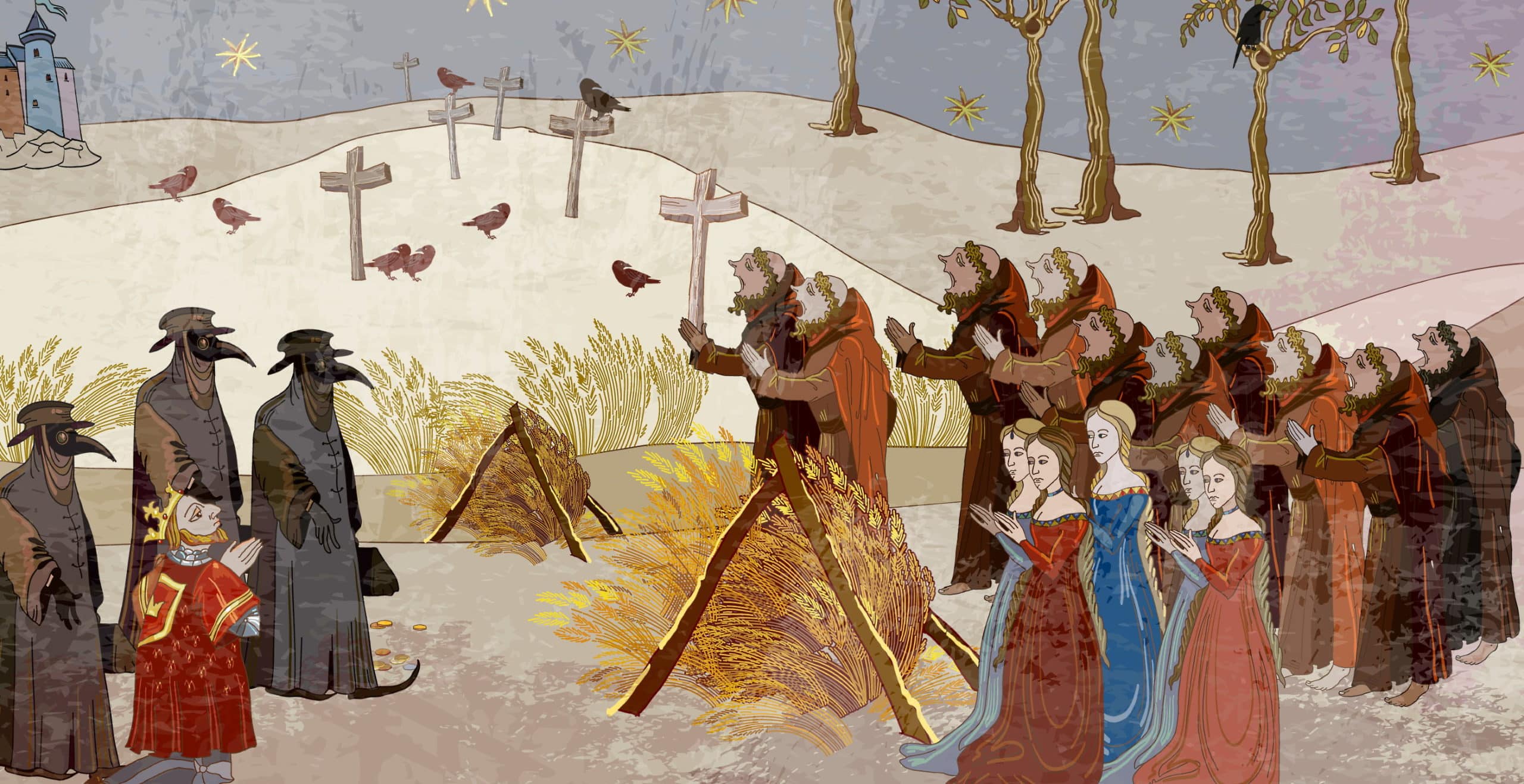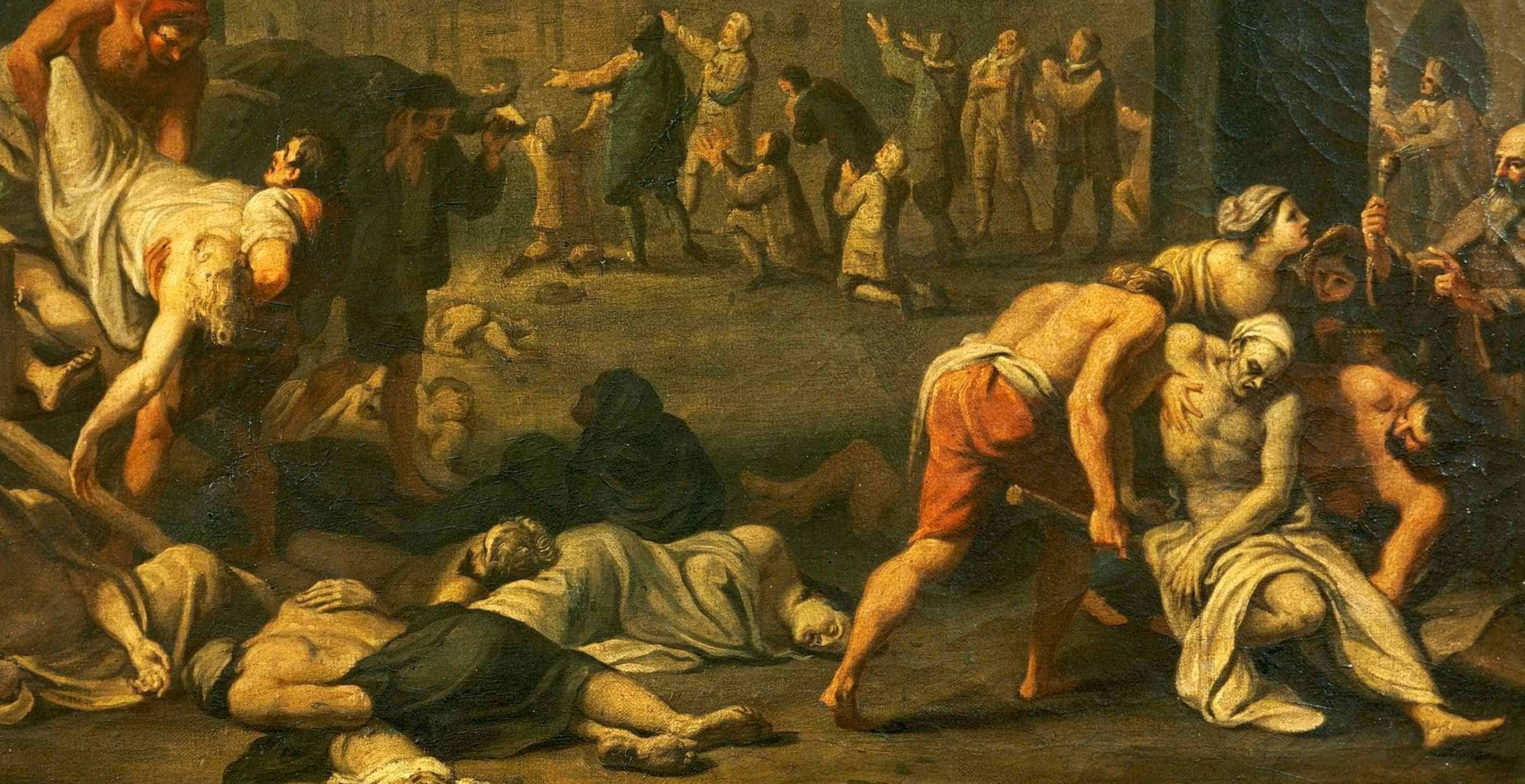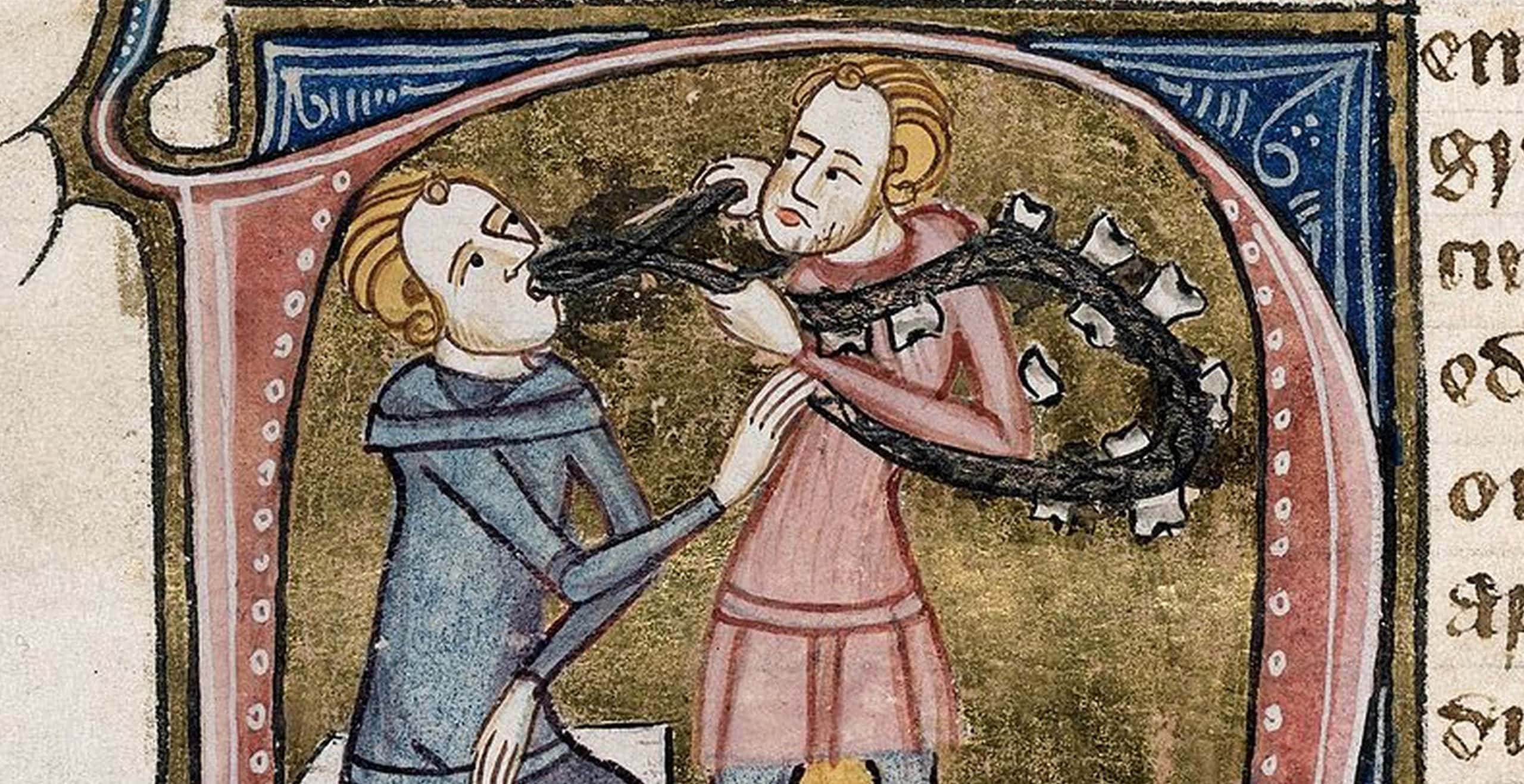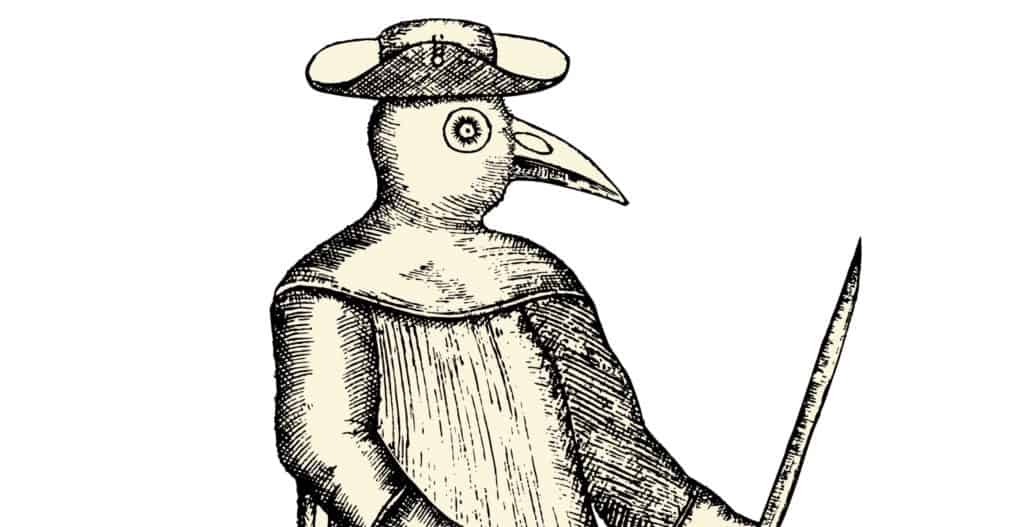Pandemics: relentless in their pursuit to wreak havoc by transcending geographical demarcations and subverting economics as we know it. Like Lady Justice, they also wear a blindfold; both treat everyone equally, regardless of wealth, power or status. And that includes the monarchy.
While Prince Charles might be the first (and hopefully last!) in the present royal family to test positive for the newest addition to Team Deadly Virus, Covid-19, he’s certainly not alone when placed in the larger historical context. Let’s take a closer look at the way centuries of pandemics have not only affected but actively moulded the British monarchy as we know it – not merely by disrupting lines of succession, but as a wake-up call in itself.
The ‘Plague’
Whilst “I tend to avoid it like the plague” might be a popular catchphrase in millennial lingo today, how many of us are truly informed about the severity of the havoc it wreaked across the bloodied pages of history back in the days? Cited as one of the deadliest diseases known to humanity, the bubonic plague is an epizootic bacterial infection that can leap from animals to humans. The infamous Black Death outbreak of 1334 ravaged almost the entirety of Eurasia and claimed as many as twenty-five million victims over the following decades.

It was relentless in its spread, reaching England in 1348. The royal family was granted no exception when Edward III, crowned king of England in 1327, lost his fourteen-year-old daughter Joan to its lethal clutches and nearly fifty years later, his grandson King Richard II was stricken with the same grief when his wife, Queen Anne of Bohemia, succumbed to it. The plague persisted for centuries but eventually a flimsy silver lining of hope shone when it began to subside. However if the human race heaved a collective sigh of relief, they were gravely reminded of this blunder for an even greater “invisible enemy” was already on the rise.
Smallpox
If there was one outbreak that brought about a new dimension to 16th century history, it’s smallpox. Surpassing the plague in its lethality, it was a highly transmissible malady stemming from the variola virus that developed pustular bumps all over the body of its victim. The young monarch King Edward VI was just fourteen when he fell prey to smallpox and measles, and despite a relatively swift recuperation, then succumbed to a bout of tuberculosis which was attributed to the compromised state of his immune system.
Due to an absence of male heirs, the throne was claimed first by his half-sister Mary and subsequently upon her death to – drumrolls please – none other than Queen Elizabeth I herself, perhaps the most (in)famous smallpox victim in British history.
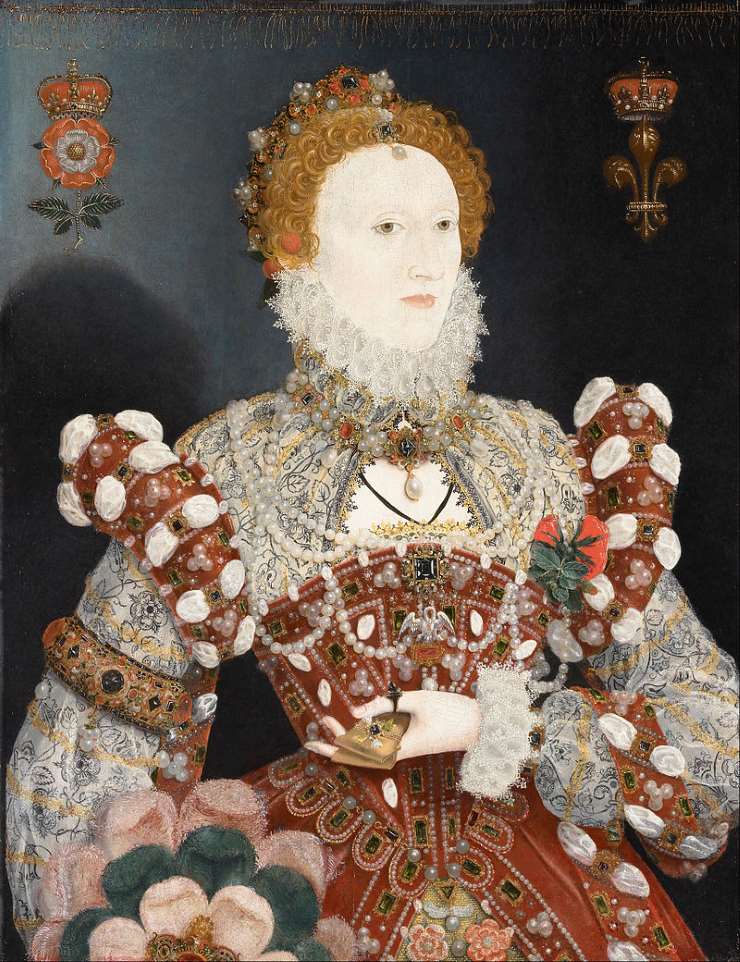
Within a few years, smallpox had morphed into an epidemic that appeared to primarily afflict either aged folks or ladies. The exceedingly detrimental punch it was known to pack didn’t just stop with it being a life-threatening illness, it stretched beyond that and could leave survivors severely disfigured as well, distorting their physiognomy in an evidently grotesque manner. Queen Elizabeth I was barely twenty-nine when she fell prey to an excruciating fever that turned out to be symptomatic of smallpox. It left deep facial scars that she famously concealed in dollops of heavy lead-based makeup (this chemically-laden treatment naturally entailed another set of potentially disastrous repercussions but that is a tale for another day) and went on to preside over a golden age characterised by Shakespeare and England developing into a global hegemon.
Her long battle with smallpox could be summed up in one of her historic statements regarding her illness, “Death possessed every joint of me.”
Influenza
The article would definitely be lacking without the inclusion of the flu outbreak that led to a string of some of the most nerve-wracking global catastrophes since the 18th century. Caused by an extremely contagious virus, influenza is one that resembles most closely the current Covid-19 in its nature and design and while our bodies can generally combat these viruses, they sometimes go the extra mile and mutate into egregious forms, leading to dire epidemics and as history has shown us more often than once, a pandemic.
The historic outbreak of 1889 that emanated from Russia flared across Europe in what would later become known as the infamous ‘Russian flu’ pandemic in the blood-ridden pages of history. The flu hit England in waves, each progressively worse than its precedent and in the third wave, shook the royal family to the core when Queen Victoria‘s grandson, Prince Albert Victor, second in line to the throne was struck with the flu barely a day before his twenty-eighth birthday. It was a hasty demise and within a week he succumbed to it, paving the way for his younger brother to command the throne in his stead, once again revamping the British monarchical structure.

His death was another massive blow to Queen Victoria, who had fallen prey to a severe case of clinical depression after her husband, Albert, had died of typhoid fever. Yet there was no clear end to their woes for merely three decades later, another influenza pandemic — the most catastrophic yet — struck the world and the royal world, of course. Known as the Spanish Flu of 1918, it afflicted a third of the world’s population and claimed as many as fifty million lives. King George V contracted the flu in May 1918 but thankfully survived.
So you see, pandemics have a way of steering history into unforeseeable directions which bring about drastic changes to mankind’s journey. Covid-19 has rendered the world dumbstruck with terror but we are here to put up a fight. For if anything, the aforementioned history is a tangible example that while pandemics can shake us, they can never break us. Some pages of history might be blotched with speckles of gory crimson but the book never ends and the subsequent chapters go on to talk about how humanity emerged triumphant, yet again.
Here’s hoping.
Sara Singh is a student from DPS RK Puram, India. A voracious reader, writer and debater, she identifies herself as an aspiring solicitor with a knack for British history and Keira Knightley movies. You’d probably always find her re-reading The Great Gatsby, Wuthering Heights and Pride and Prejudice.
